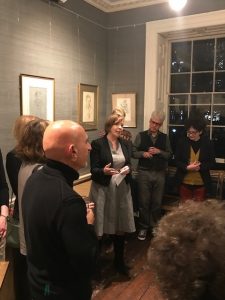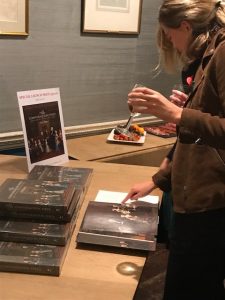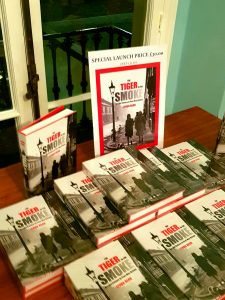If you’re in the midst of your studies, graduation can seem a long hard way off. So take a look at these happy faces and take inspiration! We had BA and Cert HE students graduating last week in a celebratory and moving ceremony at Senate House – warm congrats to all of them. The monumental stairs in the foyer were the perfect setting for some impressive mortarboard tossing. 
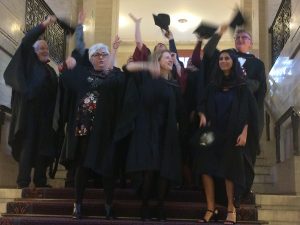
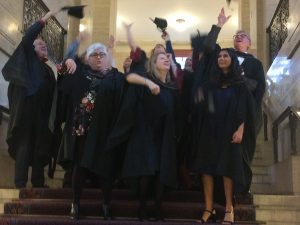
A great way of staying in touch with Birkbeck post-graduation (but also during your studies) and satisfying your need for art history is to join the London Art History Society, which is afffiliated with the department and organises a rich programme of lectures, courses and visits. They also have a snazzy new website.
The first of our major events in the Opening Up Art History: 50 Years at Birkbeck anniversary programme is coming up on Thursday 30 November 6pm in the Clore Lecture Theatre. There are still a few places for what promises to be a fascinating lecture by Gabriele Finaldi, Director of the National Gallery, on How to form a national collection. The Prado Museum and the National Gallery, London. Book here! Come along to the fun reception afterwards too – all warmly welcome.
You can also now book for the second of our big anniversary lectures, by Tristram Hunt, Director of the V&A, who will be giving us insights into where the V&A is headed in the future.
Our own Suzannah Biernoff has been in Houston, Texas, where she was an invited speaker at Rice University Art History department’s inaugural interdisciplinary graduate conference, Vital Constitutions: The Appearance of ‘Health’ in History. The conference explored representations and realities of health, illness, care and condemnation and included presentations by artists and emerging scholars in art history, anthropology, architecture and performance studies.
You can hear Suzannah talking about her research on Radio 4’s World War One: The Cultural Front, available on BBC iPlayer. The series examines artistic responses to the war year by year. In 1917 sculptor Francis Derwent Wood set up a studio for portrait masks in Wandsworth after witnessing the profound psychological impact on patients with facial injuries. Wood and his team at the 3rd London General Hospital sculpted masks that would make the patient look as close as possible to how he had been before he was wounded. A century later, we’re left puzzling about what these masks really are: a well intentioned but flawed medical tool, or a kind of anti-portraiture that shows the realities of war in a way that still feels visceral even today.
It’s a big year for new books by Birkbeck art historians. Kate Retford (whom you’ll remember as former head of department and blogger) launched her new book published by Yale University Press and the Paul Mellon Centre for the Study of British Art, The Conversation Piece: Making Modern Art in Eighteenth-Century Britain, in the atmospheric spaces of the Art Workers Guild. It was a sparkling evening and a celebration of an amazing achievement.
I’m off now to moderate a seminar at the Paul Mellon Centre entitled ‘Policy into Practice: Implementing Fair Dealing for image copyright at British Art Studies’. There are still places if you decide at the last minute you’d like to come along. It’s part of a series of events at Birkbeck on Fair Dealing and the uses of images in academic research. The final event, the Fair Dealing Conference, takes place this Friday 25th, 10-6, and features our own Steve Edwards as well as experts in copyright law, moving images, and artists’ rights. Meaty and important stuff, both practically and conceptually.
. . Category: Uncategorized


